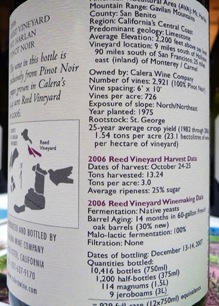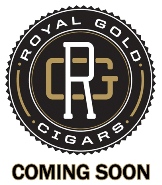Commentary: What’s on the Label?
12 Feb 2013
We’ve pontificated about the lack of information for many cigars before, but I recently came across this post about wine labels that got me thinking again about the state of cigar disclosures. Or more accurately, the terrible lack of information about cigars.
 If you take a look at this wine label (which I’ll readily admit is hardly typical) you’ll see tons of information, virtually all of which could be just as easily at home on a cigar box: type of grapes (or tobacco), location of vineyards (or farms), yield per acre, year originally planted, date of harvest, aging information, blend information, date bottled (or boxed), and quantity made.
If you take a look at this wine label (which I’ll readily admit is hardly typical) you’ll see tons of information, virtually all of which could be just as easily at home on a cigar box: type of grapes (or tobacco), location of vineyards (or farms), yield per acre, year originally planted, date of harvest, aging information, blend information, date bottled (or boxed), and quantity made.
And yet, you won’t find that information on any cigar box. At most you’ll find a list of the countries where the tobacco comes from and a box date.
One rare exception is the Tatuaje La Vérité (the label can be seen here) which does contain virtually all available information: the farm that grew the tobacco, vintage of crops, tobacco varietals and percentages, factory where it was rolled, dates rolled, and quantity produced.
But perhaps it’s no coincidence that La Vérité is based off of a wine model (for better or worse including the futures model). For the other 99% of cigars, it seems like cigar makers give us only enough information as they feel they can get away with.
There are a few reasons why I think this lack of specific information persists for cigars. The one legitimate reason for the lack of disclosure regards protection of innovation. But even this is often cop-out, designed to give cigar makers the option of changing the blend later if they can’t secure enough tobacco from the same tobacco farms down the line.
More generally, I suspect it’s a laziness on the part of of cigar makers who’d rather shroud their creations in mystery instead of explaining why their blend is superior. While wine tends to get more specific as the price goes up (buy a First Growth Bordeaux, for example, and you know exactly what small plot of land the grapes were grown on and in which year), there exists an inverse correlation between cigar cost and the availability of cigar information. Expensive cigars are usually aged significantly before they come to market, but the years of harvest, rolling, or boxing are rarely divulged.
Aesthetically, I have great respect for making cigar boxes look good, and I understand that too much text clutters up a good-looking cigar box (let alone a cigar band). But even on cigar makers’ websites, it’s too hard to come by more than just the general information about a specific cigar blend.
To that end, I think cigar makers grossly underestimate cigar smokers’ thirst for more information. (And the millions of visitors we’ve had to StogieGuys.com suggest I’m right.) So here’s to hoping cigar makers will start increasing the information they make available about their cigars. Because a critical part of enjoying a cigar is learning why you enjoy it.
photo credit: Dr. Vino

 Gary Griffith must have gotten similar feedback pretty regularly, or perhaps he just had a change of heart about the best way to market this stellar creation. Whatever the case, he decided to re-brand the line as La Musa Mοῦσα, which—as
Gary Griffith must have gotten similar feedback pretty regularly, or perhaps he just had a change of heart about the best way to market this stellar creation. Whatever the case, he decided to re-brand the line as La Musa Mοῦσα, which—as 




 It’s also saying a lot because of the excessive number of unique blends Gurkha produces. On its
It’s also saying a lot because of the excessive number of unique blends Gurkha produces. On its 
 Patrick Ashby
Co-Founder & Editor in Chief
Patrick Ashby
Co-Founder & Editor in Chief Patrick Semmens
Co-Founder & Publisher
Patrick Semmens
Co-Founder & Publisher George Edmonson
Tampa Bureau Chief
George Edmonson
Tampa Bureau Chief